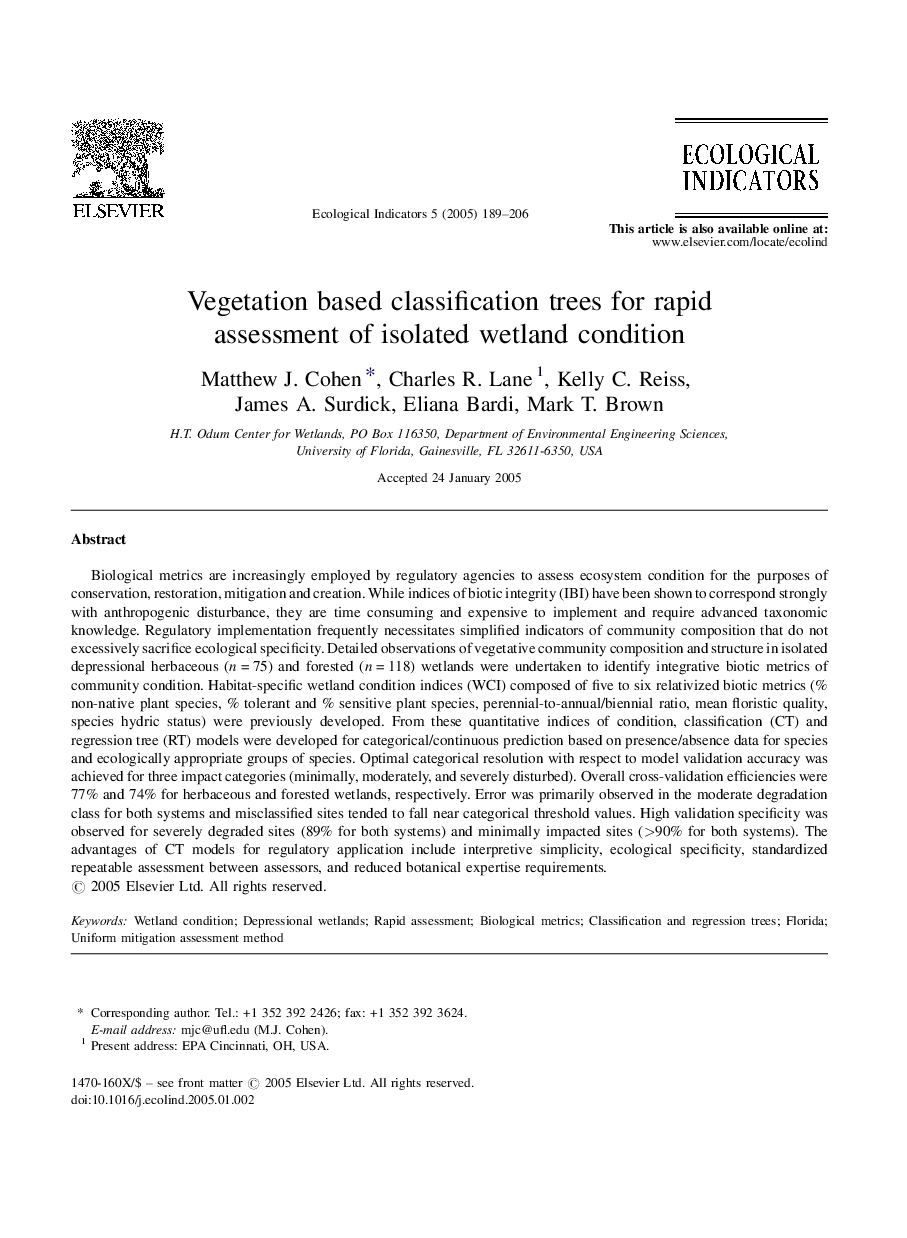| Article ID | Journal | Published Year | Pages | File Type |
|---|---|---|---|---|
| 9443197 | Ecological Indicators | 2005 | 18 Pages |
Abstract
Biological metrics are increasingly employed by regulatory agencies to assess ecosystem condition for the purposes of conservation, restoration, mitigation and creation. While indices of biotic integrity (IBI) have been shown to correspond strongly with anthropogenic disturbance, they are time consuming and expensive to implement and require advanced taxonomic knowledge. Regulatory implementation frequently necessitates simplified indicators of community composition that do not excessively sacrifice ecological specificity. Detailed observations of vegetative community composition and structure in isolated depressional herbaceous (n = 75) and forested (n = 118) wetlands were undertaken to identify integrative biotic metrics of community condition. Habitat-specific wetland condition indices (WCI) composed of five to six relativized biotic metrics (% non-native plant species, % tolerant and % sensitive plant species, perennial-to-annual/biennial ratio, mean floristic quality, species hydric status) were previously developed. From these quantitative indices of condition, classification (CT) and regression tree (RT) models were developed for categorical/continuous prediction based on presence/absence data for species and ecologically appropriate groups of species. Optimal categorical resolution with respect to model validation accuracy was achieved for three impact categories (minimally, moderately, and severely disturbed). Overall cross-validation efficiencies were 77% and 74% for herbaceous and forested wetlands, respectively. Error was primarily observed in the moderate degradation class for both systems and misclassified sites tended to fall near categorical threshold values. High validation specificity was observed for severely degraded sites (89% for both systems) and minimally impacted sites (>90% for both systems). The advantages of CT models for regulatory application include interpretive simplicity, ecological specificity, standardized repeatable assessment between assessors, and reduced botanical expertise requirements.
Keywords
Related Topics
Life Sciences
Agricultural and Biological Sciences
Ecology, Evolution, Behavior and Systematics
Authors
Matthew J. Cohen, Charles R. Lane, Kelly C. Reiss, James A. Surdick, Eliana Bardi, Mark T. Brown,
